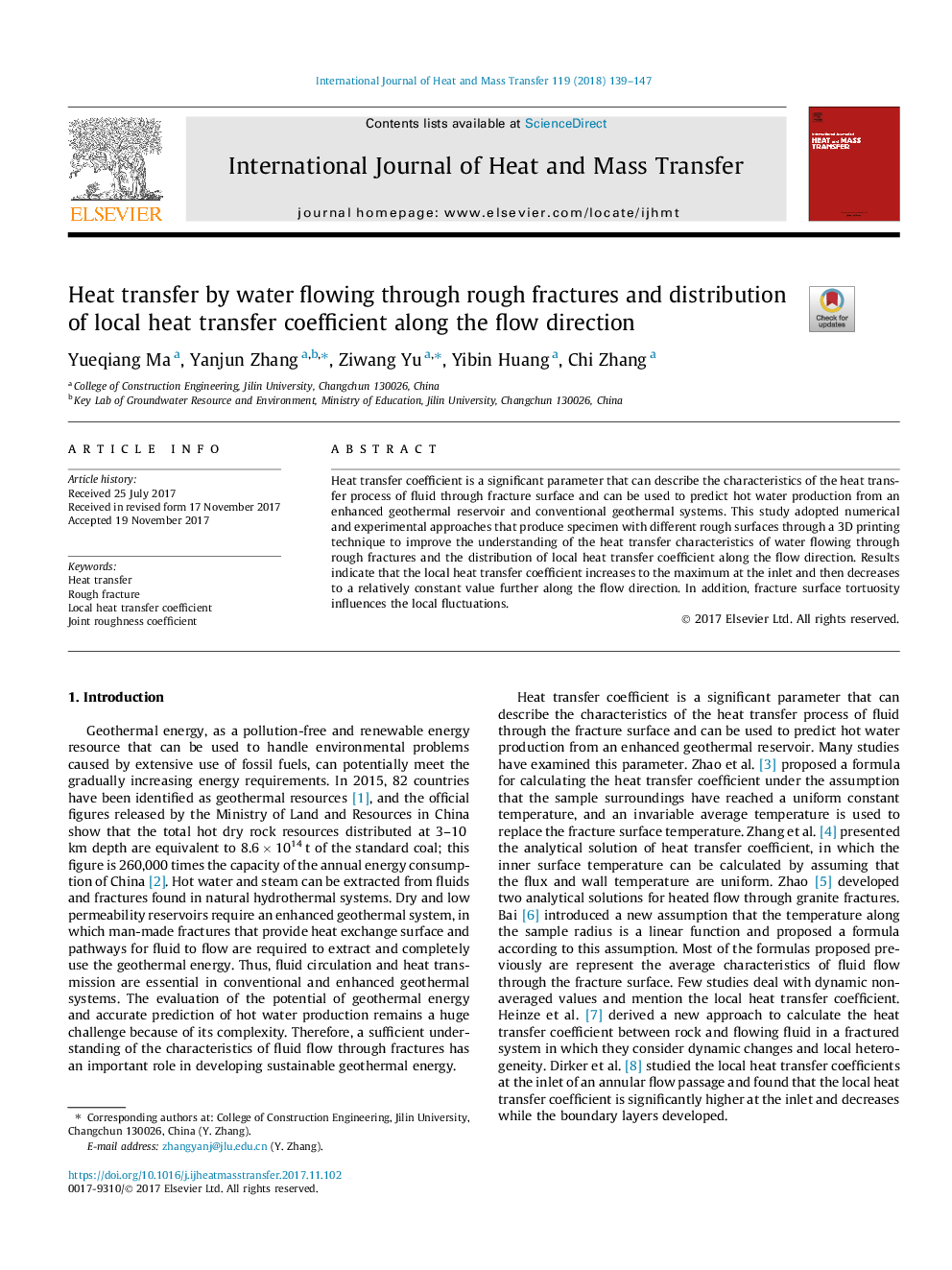| Article ID | Journal | Published Year | Pages | File Type |
|---|---|---|---|---|
| 7054604 | International Journal of Heat and Mass Transfer | 2018 | 9 Pages |
Abstract
Heat transfer coefficient is a significant parameter that can describe the characteristics of the heat transfer process of fluid through fracture surface and can be used to predict hot water production from an enhanced geothermal reservoir and conventional geothermal systems. This study adopted numerical and experimental approaches that produce specimen with different rough surfaces through a 3D printing technique to improve the understanding of the heat transfer characteristics of water flowing through rough fractures and the distribution of local heat transfer coefficient along the flow direction. Results indicate that the local heat transfer coefficient increases to the maximum at the inlet and then decreases to a relatively constant value further along the flow direction. In addition, fracture surface tortuosity influences the local fluctuations.
Related Topics
Physical Sciences and Engineering
Chemical Engineering
Fluid Flow and Transfer Processes
Authors
Yueqiang Ma, Yanjun Zhang, Ziwang Yu, Yibin Huang, Chi Zhang,
